Topics
Category
Era
Women on the World War I Home Front
After the United States entered World War I in 1917, Minnesota women, like Americans across the nation, were called to contribute to the war effort. Though some went to Europe and served as nurses, drivers, and aid workers on the battlefields, many more participated on the home front. They took on new jobs, conserved vital resources, and joined volunteer organizations. At the same time, they struggled to come to terms with conflicting ideals of patriotism, loyalty, and what it meant to be an American.
Participation on the home front took many forms. Some women worked in offices and factories to replace men who had enlisted. Schools and colleges across Minnesota offered them a variety of vocational programs, including training courses in nursing and clerical jobs. While Minnesota women did not enter factory work at the same rate as women in other parts of the country, they did more agricultural labor. In the summers of 1917 and 1918, women did paid and volunteer work in farm fields statewide. A 1919 vocational study in Minneapolis showed that during the war, over half of the women in the city’s workforce were paid less than the men that they had replaced.
During the war, women also were called on to join the “Army of American Housewives.” They were urged to conserve in nearly every area of household life. Women were encouraged to avoid using delivery services for their shopping to free workers for war service. To avoid inefficiency, fashion magazines and pattern companies advised women to choose patterns that made the best use of fabric and to do without new clothes whenever they could. Women, as well as men, were asked to buy Liberty bonds and donate to the Red Cross. Minnesotans were bombarded with reminders to make do with less, especially when it came to food.
During World War I, food and patriotism were closely linked. Historians argue that, aside from the draft, food conservation had the most significant impact on life on the Minnesota home front. Minnesotans produced as much of their own food as possible and consumed less meat and wheat so that it could be shipped to Europe. The 1917 Minnesota State Fair hosted canning and baking competitions for women and girls. By 1918, a conservation schedule of meatless, wheatless, and porkless meals dictated what was served on tables statewide. Since household cooking and shopping were largely the work of women, their participation was especially vital. The University of Minnesota Extension Service offered women courses in growing vegetable gardens, nutrition, and canning and preserving food.
Since the beginning of the war in 1914, Minnesota women had been active in organizations that fed, housed, and clothed war widows and orphans in Europe. Once the United States entered the war, voluntary organizations became more active. Women joined, led, and donated their time and money to groups that provided soldiers with food, shelter, and supplies. They joined YWCA sewing and knitting circles to craft items for soldiers and civilians. They rolled bandages and collected funds for the Red Cross.
Along with these larger organizations, women in book groups, college clubs, PTAs, and church groups committed to knitting, sewing, nursing, and fundraising. Girls were encouraged to enlist as “Victory Girls” by pledging money saved from allowances and babysitting jobs. Prominent women like University of Minnesota professor Maria Sanford traveled the state giving lectures to raise awareness of war-related activities.
While many relief efforts claimed to represent all Minnesota women, in reality the situation was more complicated. Although many girls and women participated in, and in many cases led, the state’s war relief organizations, participation was not always equal. Upper-class women held nearly all of the leadership positions. Urban women were more likely to contribute their support than women who lived in rural areas.
The work of the Woman’s Committee of the Minnesota Commission of Public Safety (MCPS) highlights these divides. The MCPS was created by an act of the Minnesota Legislature in 1917 to protect the public and mobilize the state’s resources for war. Shortly after its formation, the MCPS established a Woman’s Committee headed by Alice Ames Winter. Winter was also named the head of the Minnesota Woman’s Committee within the Council of National Defense. By holding these two prominent leadership roles at the same time, Winter was able to set her own agenda apart from the MCPS.
During 1917, Winter’s organization built a network of women in every county in Minnesota. These county committees led food conservation efforts and Liberty Loan and Red Cross donation drives. They worked to match women with volunteer and vocational training so that they could fill vacant jobs. Winter stressed the importance of the protection of women and children, especially infants, on the home front.
One of the committee’s most central programs was also its most controversial. Winter, along with many other wartime leaders, believed that Americanization was essential to winning the war. They targeted Minnesota’s immigrant communities, including German Americans, Austrian Americans, and Finnish Americans. Stressing that it was a matter of patriotism, the Woman’s Committee and other groups pressured the immigrants to adopt English and abandon their ethnic identities. In turn, many immigrants resisted—particularly those in small towns and rural areas, where the war was unpopular.
Though it appeared to unite them in a common cause, the war divided Minnesotans along social, regional, and ethnic lines. Many groups used scare tactics to try to eliminate perceived disloyalty. Pamphlets and newspaper columns described the “woman slacker” who was a drag on the war effort. These slackers, they claimed, wasted wheat, neglected war work, and criticized the government. Newspapers printed the names of those who didn’t contribute to the Red Cross or Liberty Loan. Members of the American Protective League, led by Charles G. Davis of Minneapolis, made similar accusations against Minnesota women who were suspected of wasting sugar and wheat or neglecting to buy Liberty bonds.
When the war ended in 1918, few of its changes remained permanent for Minnesota women. Most of those who had been hired to replace enlisted men were laid off when the soldiers returned home. Winter and the Woman’s Committee of the MCPS did not retain the power that they had held. However, one notable change for Minnesota women occurred soon after the armistice. Ratification of the Nineteenth Amendment in 1920 granted them, and women across the nation, the right to vote.
Bibliography
Capozzola, Christopher. Uncle Sam Wants You: World War I and the Making of the Modern American Citizen. New York: Oxford University Press, 2008.
Chrislock, Carl H. Watchdog of Loyalty: The Minnesota Commission of Public Safety during World War I. St. Paul: Minnesota Historical Society Press, 1991.
Eighmey, Rae Katherine. Food Will Win the War: Minnesota Crops, Cooks, and Conservation during World War I. St. Paul: Minnesota Historical Society Press, 2010.
Greenwald, Maurine Weiner. “Women Workers and World War I: The American Railroad Industry, A Case Study.” Journal of Social History 9, no. 2 (Winter 1975): 154–177.
Johnson, Elizabeth. War-Time Replacement in the City of Minneapolis. Minneapolis: Woman’s Occupational Bureau, 1919.
Kunz, Virginia Brainerd. Muskets to Missiles: A Military History of Minnesota. St. Paul: Minnesota Statehood Centennial Commission, 1958.
Schoone-Jongen, Robert. “Patriotic Pressures WWI: The Dutch experience in southwest Minnesota in World War I.” Origins Historical Magazine of Calvin College and Seminary Archives 7, no.2 (1989): 2–9.
Related Resources
Primary
Blatch, Harriot Stanton. Mobilizing Woman-Power. New York: Woman’s Press, 1918.
Clarke, Ida Clyde. American Women and the World War. New York: D. Appleton, 1918.
P2229
Club minute book, 1912–1922
Woman’s Progress Club
Manuscript Collection, Minnesota Historical Society, St. Paul
Description: Club minute book describes patriotic activities and speakers of Mendota, Minnesota women’s club during World War I.
Correspondence and miscellaneous records, 1917–1920
Minnesota Commission of Public Safety, Woman’s Committee of Ramsey County
State Archives Collection, Minnesota Historical Society, St. Paul
Description: Materials related to the work of the MCPS Woman’s Committee of Ramsey County including child welfare surveys, liberty loan drives, women and volunteer work, and similar.
Correspondence and subject files, 1916–1920 (bulk 1920)
Minnesota Commission of Public Safety, Woman’s Division
State Archives Collection, Minnesota Historical Society, St. Paul
http://www2.mnhs.org/library/findaids/gr00963.xml
Description: Files of Alice Ames Winter and secretary, Aimee Fischer, related to MCPS war organizing.
Minnesota War Records Commission, Collected Materials, 1917–
Minnesota War Records Commission
State Archives Collection, Minnesota Historical Society, St. Paul
Description: Materials describing the World War I activities of many small agencies in Minnesota.
Minnesota Woman’s Committee, Council of National Defense and Commission of Public Safety. Minneapolis: [The Committee], 1918.
Pamphlets relating primarily to civilian war work in Minnesota during World War I, 1916–
Pamphlet Collection, Minnesota Historical Society, St. Paul
Description: Pamphlets and printed ephemera relating to paid and voluntary work on the home front during World War I.
Pamphlets relating to the American Red Cross in Minnesota, 1918–
Pamphlet Collection, Minnesota Historical Society, St. Paul
Description: Printed ephemera distributed by the American Red Cross in Minnesota.
Red Cross Northern Division records, 1915–1921
American National Red Cross, Northern Division
Manuscript Collection, Minnesota Historical Society, St. Paul
Description: papers related to civilian work and soldier relief efforts in Minnesota as well as surrounding northern states during World War I.
World War I home front ephemera
Pamphlet Collection, Minnesota Historical Society, St. Paul
Description: Printed pamphlets, brochures, and letters distributed in Minnesota during World War I.
P386
Wellesley Club St Paul, Records Relating to European War Relief, 1918
Manuscript Collection, Minnesota Historical Society, St. Paul
Description: Correspondence, patterns, and other items related to the St. Paul Wellesley Alumnae club’s war relief efforts.
Work for Women: Institutions in Minnesota Training Women for Occupations other than Teaching. [MN]: Minnesota Commission of Public Safety, 1917.
YMCA and YWCA records, 1911–1920 (bulk 1918–1919)
Minnesota War Records Commission
State Archives Collection, Minnesota Historical Society, St. Paul
http://www.mnhs.org/library/findaids/wrc006.xml
Description: Correspondence and Pamphlets related to the work of the YMCA and YWCA during World War I.
Secondary
Bolin, Winifred Wandersee. “Heating Up the Melting Pot.” Minnesota History 45, no. 2 (Summer 1976): 58–69.
http://collections.mnhs.org/mnhistorymagazine/articles/45/v45i02p058-069.pdf
Holbrook, Franklin F., and Livia Appel. Minnesota in the War with Germany. 2 vols. St. Paul: Minnesota Historical Society, 1932.
Ziebarth, Marilyn. “Woman’s Rights Movement,” Minnesota History 42, no. 6 (Summer 1971): 225–230.
http://collections.mnhs.org/mnhistorymagazine/articles/42/v42i06p225-230.pdf
Related Images
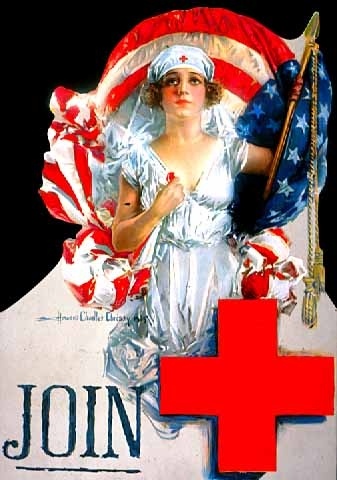
Join (the Red Cross)
Public domain
Holding Location
Articles
More Information
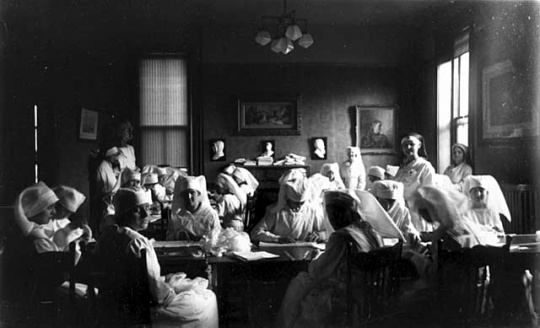
Red Cross workers
Public domain
Holding Location
Articles
More Information
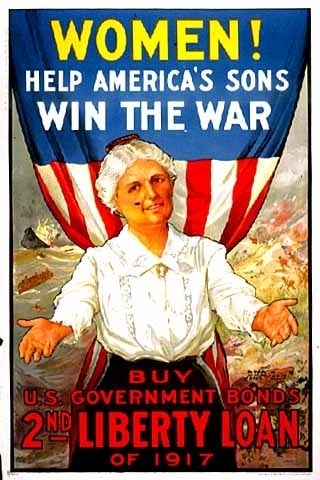
Women! Help America’s Sons Win the War
Public domain
Holding Location
Articles
More Information
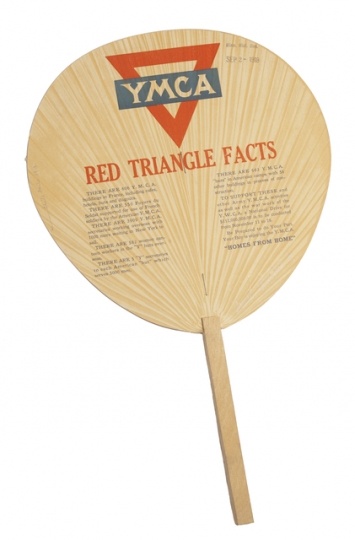
YMCA paper fan
All rights reserved
Holding Location
Articles
More Information
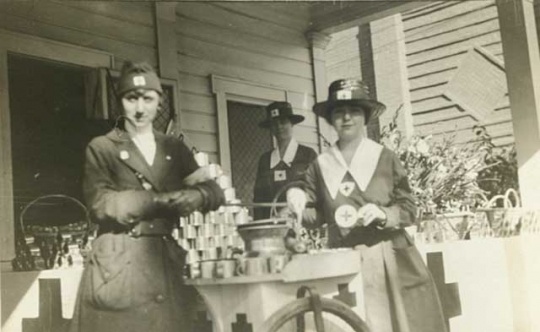
Red Cross workers
Public domain
Holding Location
Articles
More Information
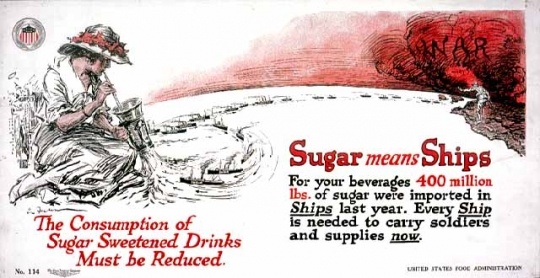
Sugar Means Ships
Public domain
Holding Location
Articles
More Information
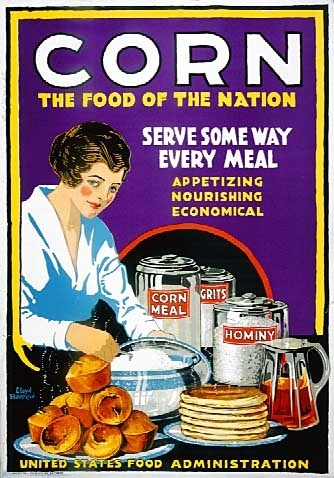
The Food of the Nation
Public domain
Holding Location
Articles
More Information
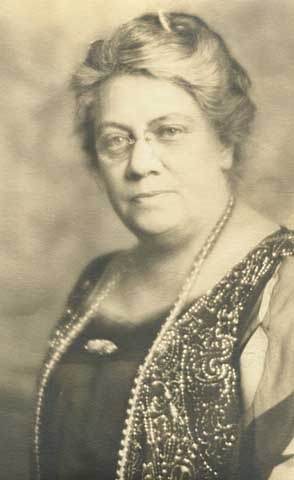
Alice Ames Winter
Holding Location
Articles
More Information
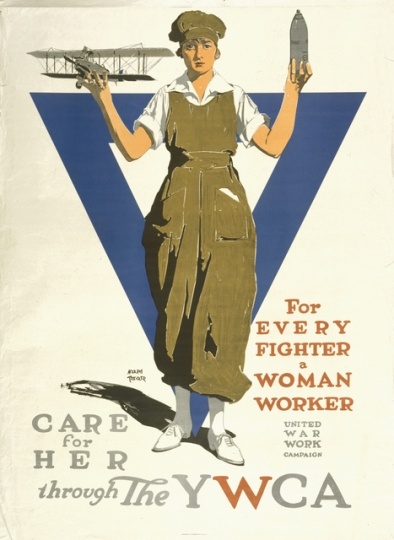
United War Work Campaign poster
Holding Location
More Information
Related Articles
Turning Point
The Woman’s Committee of the Minnesota Commission of Public Safety is founded in 1917. The group leads Minnesota women in a program of war support and public reform.
Chronology
1914
April 6, 1917
April 19, 1917
May 1917
August 1917
November 11, 1918
Winter 1918
March 1919
September 9, 1919
Bibliography
Capozzola, Christopher. Uncle Sam Wants You: World War I and the Making of the Modern American Citizen. New York: Oxford University Press, 2008.
Chrislock, Carl H. Watchdog of Loyalty: The Minnesota Commission of Public Safety during World War I. St. Paul: Minnesota Historical Society Press, 1991.
Eighmey, Rae Katherine. Food Will Win the War: Minnesota Crops, Cooks, and Conservation during World War I. St. Paul: Minnesota Historical Society Press, 2010.
Greenwald, Maurine Weiner. “Women Workers and World War I: The American Railroad Industry, A Case Study.” Journal of Social History 9, no. 2 (Winter 1975): 154–177.
Johnson, Elizabeth. War-Time Replacement in the City of Minneapolis. Minneapolis: Woman’s Occupational Bureau, 1919.
Kunz, Virginia Brainerd. Muskets to Missiles: A Military History of Minnesota. St. Paul: Minnesota Statehood Centennial Commission, 1958.
Schoone-Jongen, Robert. “Patriotic Pressures WWI: The Dutch experience in southwest Minnesota in World War I.” Origins Historical Magazine of Calvin College and Seminary Archives 7, no.2 (1989): 2–9.
Related Resources
Primary
Blatch, Harriot Stanton. Mobilizing Woman-Power. New York: Woman’s Press, 1918.
Clarke, Ida Clyde. American Women and the World War. New York: D. Appleton, 1918.
P2229
Club minute book, 1912–1922
Woman’s Progress Club
Manuscript Collection, Minnesota Historical Society, St. Paul
Description: Club minute book describes patriotic activities and speakers of Mendota, Minnesota women’s club during World War I.
Correspondence and miscellaneous records, 1917–1920
Minnesota Commission of Public Safety, Woman’s Committee of Ramsey County
State Archives Collection, Minnesota Historical Society, St. Paul
Description: Materials related to the work of the MCPS Woman’s Committee of Ramsey County including child welfare surveys, liberty loan drives, women and volunteer work, and similar.
Correspondence and subject files, 1916–1920 (bulk 1920)
Minnesota Commission of Public Safety, Woman’s Division
State Archives Collection, Minnesota Historical Society, St. Paul
http://www2.mnhs.org/library/findaids/gr00963.xml
Description: Files of Alice Ames Winter and secretary, Aimee Fischer, related to MCPS war organizing.
Minnesota War Records Commission, Collected Materials, 1917–
Minnesota War Records Commission
State Archives Collection, Minnesota Historical Society, St. Paul
Description: Materials describing the World War I activities of many small agencies in Minnesota.
Minnesota Woman’s Committee, Council of National Defense and Commission of Public Safety. Minneapolis: [The Committee], 1918.
Pamphlets relating primarily to civilian war work in Minnesota during World War I, 1916–
Pamphlet Collection, Minnesota Historical Society, St. Paul
Description: Pamphlets and printed ephemera relating to paid and voluntary work on the home front during World War I.
Pamphlets relating to the American Red Cross in Minnesota, 1918–
Pamphlet Collection, Minnesota Historical Society, St. Paul
Description: Printed ephemera distributed by the American Red Cross in Minnesota.
Red Cross Northern Division records, 1915–1921
American National Red Cross, Northern Division
Manuscript Collection, Minnesota Historical Society, St. Paul
Description: papers related to civilian work and soldier relief efforts in Minnesota as well as surrounding northern states during World War I.
World War I home front ephemera
Pamphlet Collection, Minnesota Historical Society, St. Paul
Description: Printed pamphlets, brochures, and letters distributed in Minnesota during World War I.
P386
Wellesley Club St Paul, Records Relating to European War Relief, 1918
Manuscript Collection, Minnesota Historical Society, St. Paul
Description: Correspondence, patterns, and other items related to the St. Paul Wellesley Alumnae club’s war relief efforts.
Work for Women: Institutions in Minnesota Training Women for Occupations other than Teaching. [MN]: Minnesota Commission of Public Safety, 1917.
YMCA and YWCA records, 1911–1920 (bulk 1918–1919)
Minnesota War Records Commission
State Archives Collection, Minnesota Historical Society, St. Paul
http://www.mnhs.org/library/findaids/wrc006.xml
Description: Correspondence and Pamphlets related to the work of the YMCA and YWCA during World War I.
Secondary
Bolin, Winifred Wandersee. “Heating Up the Melting Pot.” Minnesota History 45, no. 2 (Summer 1976): 58–69.
http://collections.mnhs.org/mnhistorymagazine/articles/45/v45i02p058-069.pdf
Holbrook, Franklin F., and Livia Appel. Minnesota in the War with Germany. 2 vols. St. Paul: Minnesota Historical Society, 1932.
Ziebarth, Marilyn. “Woman’s Rights Movement,” Minnesota History 42, no. 6 (Summer 1971): 225–230.
http://collections.mnhs.org/mnhistorymagazine/articles/42/v42i06p225-230.pdf










